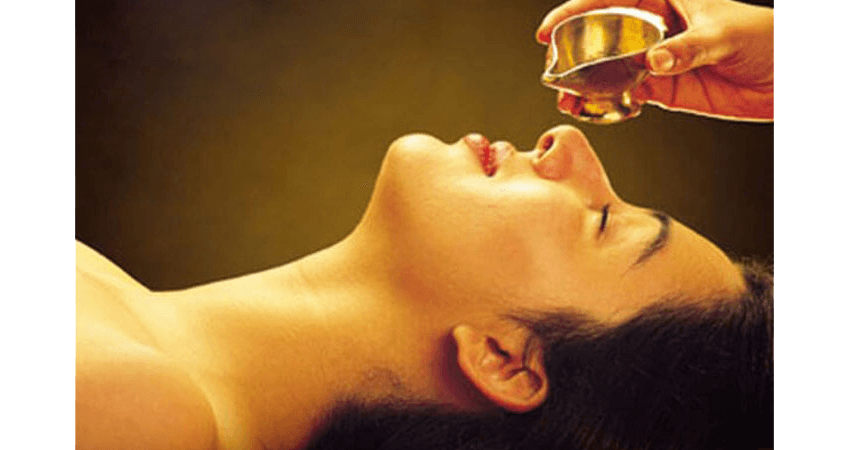In Ayurveda, panchakarma therapy is used for the maintenance of health and eradication of diseases from their root,
Nasya karma is one among them. It is mainly given for treatment of diseases above clavicle.
NASAL ROUTE IS DIVIDED INTO 3 FUNCTIONAL ZONE
- Vestibular region
- Respiratory region
- Olfactory region
VESTIBULAR REGION
- found at the opening of nasal passage
- Responsible for filtering the air
- No drug absorption here
RESPIRATORY REGION :
- Maximum drug absorption occurs here.
- It has maximum vascularity
OLFACTORY REGION:
- Transportation of drugs to brain and cerebro spinal fluid
MODE OF ACTION OF NASYA
1. Vascular pathway:
The nasal tissue is highly vascularised making it an attractive site for rapid and efficient systemic absorption. vascular path transportation is possible through the pooling of nasal venous blood into the facial vein. It communicates freely with intracranial circulation.
2. Neurological Pathway:
Through olfactory pathway this nerve is connected with limbic system and hypothalamus which are having control over endocrine secretions.
3. Diffusion through Nasal Mucosa:
In the absorption of drugs from the nasal cavity first step is passage through mucous.
ADVANTAGES OF NASAL ROUTE DRUG ADMINISTRATION
- Fast onset of therapeutic effect.
- Rapid absorption ,higher bio availability.
- Avoidance of metabolism by GIT.
- Non Invasive
CONCLUSION
– Nasya oushadhi reaches to brain via nasal route and act on higher centers of brain.
– It has advantages in terms of reduction of systemic exposure and hence side effects.
– This Relevancy Of “Nasa Hi Shirasodwaram” Can Be Proved Which Ultimately Explains The Mode Of Action Of Nasya Karma.
Dr Reeshma.M.D
Centre Head -Bangalore
Travancore Ayurveda



